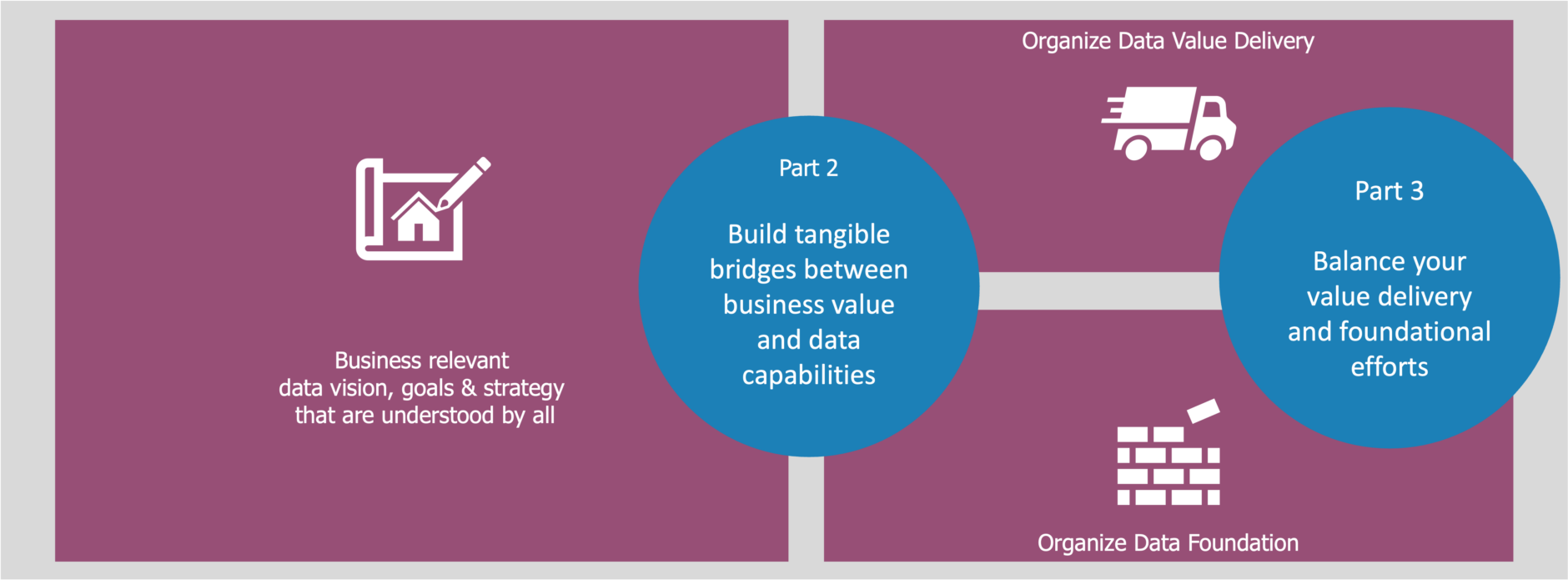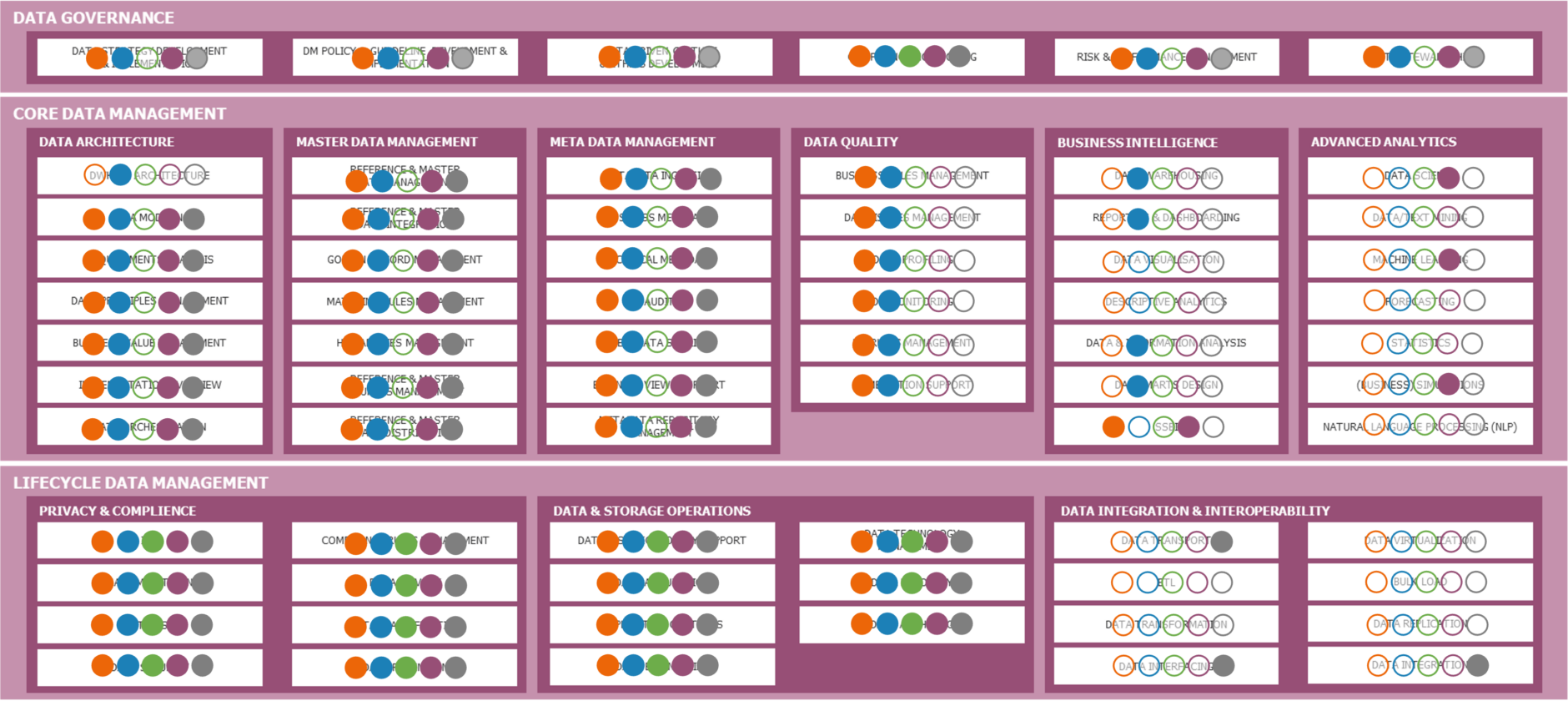Focus on the tap and on the plumbing
Don’t forget to continually address the appetite for business results
This is the third and last part of our blog series on key approaches for designing successful Data to Value journeys. In part 2 we talked about the importance of data and business people spending time together to explicitly define and prioritize data value opportunities. By doing this abstract data value terms are made tangible and bridges are built from required business capabilities to data capabilities. A joint understanding is achieved of what data capabilities are required; including the typical and for business people sometimes uncomfortable truth that also nasty foundational capabilities require company-wide, thus also business, attention.
In this blog we discuss the importance on continually addressing the appetite for business results by delivering the data products that the business needs whilst also working on an improved Data Foundation.

The effects of not finding the right balance
It is probably easiest to define right balance from a perspective of imbalance.
- If you focus your budget and efforts too much on Data Value Delivery, you will be end up with data products that do not meet requirements; do not comply to regulations, cannot be integrated in your architecture, do not scale for production usage, do not provide sufficiently accurate insights etcetera. Great experiments in a dark and cold cellar that will never see the light of day.
- If you put too much emphasis on Data Foundation, you will end up doing lengthy and costly work without making an impact on the business. You spend a lot time and budget without visible impact, you will loose momentum, business will loose their focus and limit their contribution, executives will become impatient and eventually the plug will be pulled.

To put it into slightly different words; without plumbing (Data Foundation) no water fill flow from the tap (Data Value Delivery). Endlessly fixing leaks in your plumbing without opening the tap will not quench your organizations thirst for value and you data initiatives will eventually perish
Based on our experiences of working with many organizations we can confidently state that already creating this awareness is already a major step forward. The next step is to structure your data activities and expenditure along these lines. This facilitates constructive dialogue and conscious decisions were points of view are understood and considered.
Data value opportunities are your guiding star
Answering the question where exactly the right balance lies for an organization is a much harder one to answer. You can build on your detailed and prioritized definition of data value opportunities; these should drive your decisions. Below we have listed several examples of recent considerations with our clients
- Do we need a machine learning capability if we are focused on using market standard systems for all our business activities expect for product engineering? Should we limit to a small pocket of advanced analytics capabilities in this business domain?
- Do we need a organization wide self service capability if only the engineering and finances departments are expected to use this? Should we then focus on cataloging only the data domains that engineering and finance intensively use?
- Giving the fact that we work with partners in sales; should we focus on data interoperability in that data domain first of all?
- Based on our business risks, what are our Critical Data Elements and should we focus on these for data quality measures first? Should we first of all tackle the data domain to which the majority of CDE’s belong to?
- Should we really focus on continuous data quality monitoring if we merely use data for descriptive reports that contain pointers for our sales people?
Create an overview of required capabilities per opportunities and consolidate this. Include the data domain dimension in analyses to allow for focused and / or staged implementation. Ask yourself the question whether staged data product releases make sense; can we deliver an 80% solution short term to later deliver enhanced solution? And were does this not make sense, e.g. due to risk of presenting misleading or incorrect insights.
Below you will find an illustrative example using a DAMA DMBok based data management capability framework.

Once you have a clear picture of your target capabilities you can start measuring the delta between your current actual and target and based on this identify what effort is required where. Where do I need to fix the plumbing and which business thirst should I focus on quenching first of all? Share considerations and options with users and jointly create the implementation roadmap.
Do not become the modern day Don Quichot
To summarize, Anderson MacGyver suggest adopting the following approaches for designing successful Data to Value journeys
- Take a business value centric approach
- Use data value opportunities as the bridge between business goals and data capabilities
- Spend time making data value opportunities explicit and always prioritize
- Speak up about the need for foundational improvements; but always relate this to the data value opportunities
- Data value opportunity priorities drive your data capabilities prioritization
- Carefully assess which data capabilities you truly require, and which you do not require, to be able to address the prioritized data value opportunities
- Consider interim releases and selective per data domain implementations to be able to deliver shorter term results
Missed the first two blogs? Jump here to the right pages:
Part 1: Did we just meet the modern day Don Quixote?
Part 2: Throwing a clump of earth into the reed

 Your digital ambitions
Your digital ambitions  Your digital ambitions
Your digital ambitions